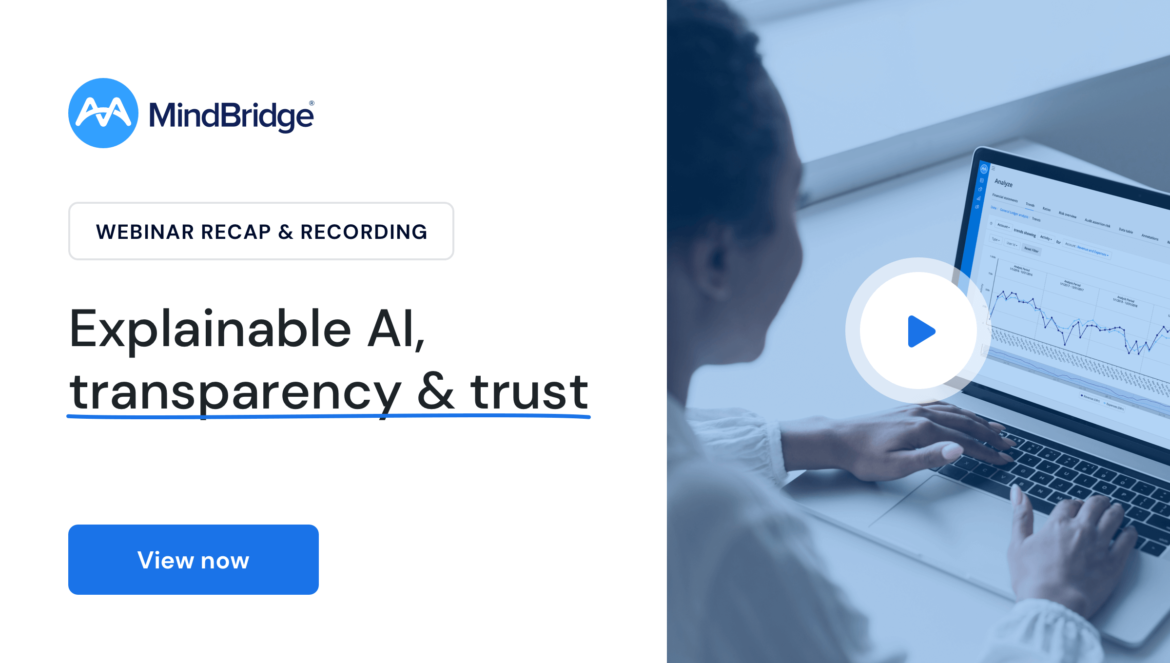Introduction
Anomaly detection analyzes an organization’s data sets and unusual behavior that needs further investigation. This system can analyze 100% of your financial or transactional data and save your business from detrimental unnoticed errors. This blog will dive further into human-centric artificial intelligence, its use in anomaly detection, and the importance of using human-centric AI for anomaly detection.
What Is Human-Centric AI?
Human-centric AI is designed to collaborate with humans to help support and scale up our ideas and objectives. For example, businesses can use human-centric AI to analyze massive amounts of data and make clear and informed business decisions to better assist with professional judgment.
This type of AI relies upon and improves with human input. It can run advanced contextual analytics on human behaviors and choices to discover behavioral patterns.
Companies have found a way to leverage human science and data to understand patterns in customer behavior in the market. They are now using this kind of technology to build effective strategies that are more user-centric.
How AI-Powered Anomaly Detection Streamlines the Process of Securing Data
Anomaly detection systems became widely available to businesses when AI automated the entire process. Human-centric AI made this system much faster, more accurate, and hassle-free.
The goal is to support humans and their professional judgment. This is accomplished through focused anomaly detection that provides insights into data and allows organizations to investigate previously unknown areas of risk. In addition, businesses can make quick and effective decisions to solve problems or dig up unfound opportunities.
Benefits of Using Human-Centric AI For Anomaly Detection System
1. Automate KPI Analysis
Before the automation that came with AI, KPI analytics was associated with tons of manual tasks. For example, businesses must use different dashboards to sort digital data from various channels. This kind of manual KPI analysis is time-consuming, especially for companies that handle large data sets.
However, AI makes things easier by running continuous checks through all the data across various dashboards. When AI finds an anomaly or unusual behavior, it alerts users instantly. The people dealing with anomalies can use the insights as soon as the abnormality is detected.
The use of AI, in this case, creates collaboration between humans and AI, which eventually helps humans reduce tedious workloads and get faster results. For example, with AI-powered automation, you can reduce the number of manual samples for a given audit or focus internal audits on specific subsidiaries where risks have surfaced.
2. Ensure Digital Security
Combining AI with anomaly detection is the best way to prevent security breaches and threats that can significantly harm your business. According to IBM Security, companies take about 206 days on average to detect a breach. This data shows us how time-consuming this process can be.
However, there is a way your audit team can detect breaches or threats as soon as they happen. AI-powered anomaly detection can do that for you by running continuous data scanning 24/7. As a result, your company experiences no delays in detection and can take action as soon you find out about a breach.
3. Dig Up Hidden Opportunities
A HubSpot survey found that marketers spend an average of 3.55 hours a week collecting, organizing, and analyzing marketing data from various sources. That amounts to about 185 hours a year.
But using AI in anomaly detection can save a lot of time for marketers and businesses, particularly in automating manual and repetitive tasks. Human labor no longer has to concern itself with menial work and can focus on furthering other business growth and expansion aspects.
AI algorithms can scan and understand analytics to discover hidden opportunities in your data sets. For example, they can alert you to keywords that aren’t specifically targeted by your team but generate excellent traffic for your website.
4. Ensure Accuracy of Anomaly Detection
No system is perfect. Even your anomaly detection system can send false alerts and create disturbances in your workflow. But there are ways to vet the system you choose to adopt into your digital stack.
One way to do this is by checks and balances in the form of third-party assurance. In the case of MindBridge, we have done this by completing a comprehensive audit of our algorithms.
The independent assessment, conducted by UCLC (University College London Consultants), is an industry first, making it easier to rely further on the results of MindBridge’s artificial intelligence. In addition, it provides a high level of transparency to any user of MindBridge technology and assurance that our AI algorithms operate as expected.
Once vetted, AI-powered anomaly detection helps you avoid false positive or negative alerts. That means you can achieve more accurate alerts and insights without wasting time on incorrect warnings.
Bottom Line
Various industries — such as banking, marketing, and medicine — are already implementing AI-powered anomaly detection. When your company deals with large and complex data sets, using human-centric AI in your anomaly detection system can bring you more efficient, safe, and satisfactory outcomes.

Want to see this powerful anomaly detection software in action? Book a demo now or view a replay of our latest webinar, which covered the explainability of A.I. and concludes with an onscreen demo.





